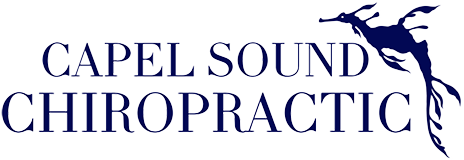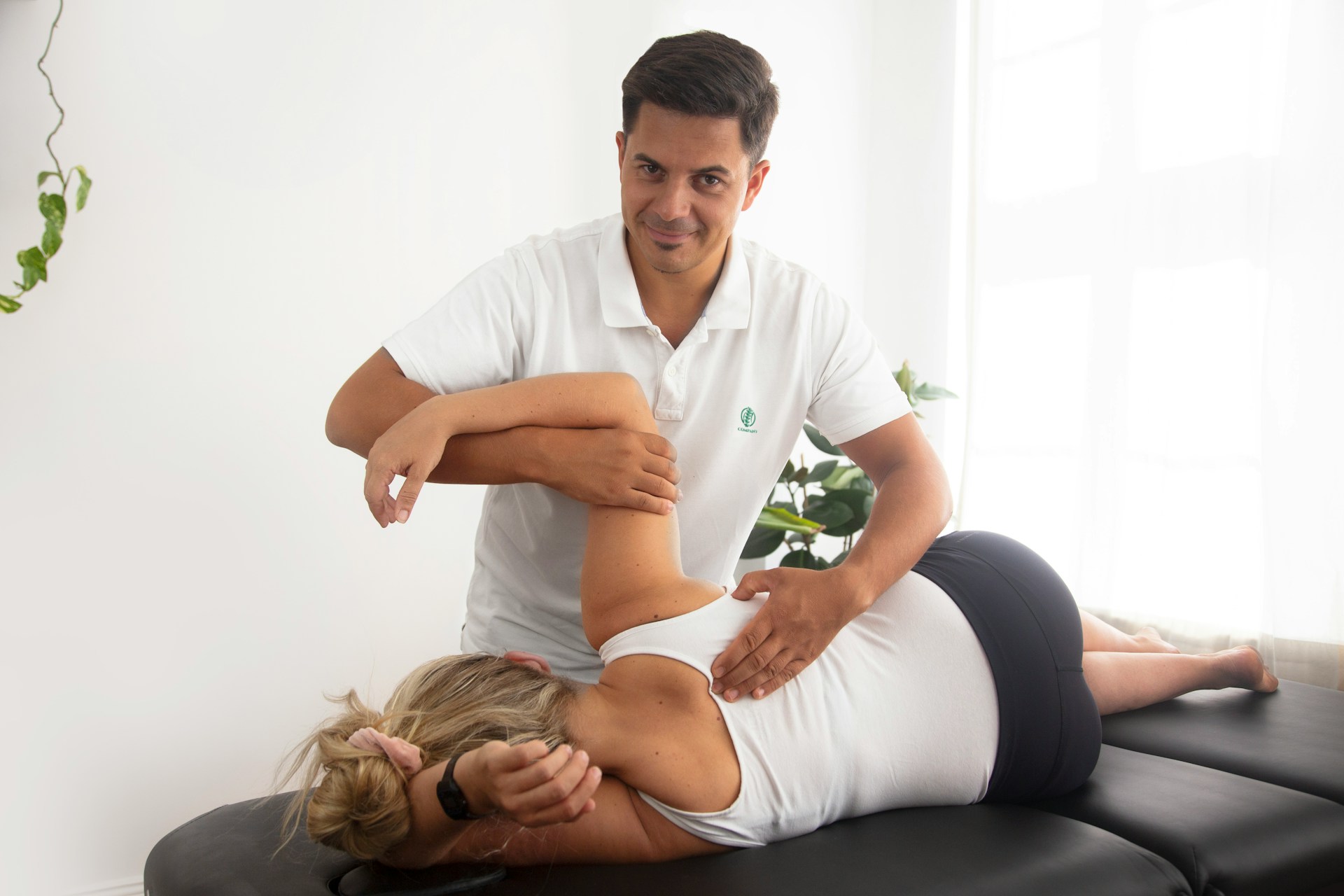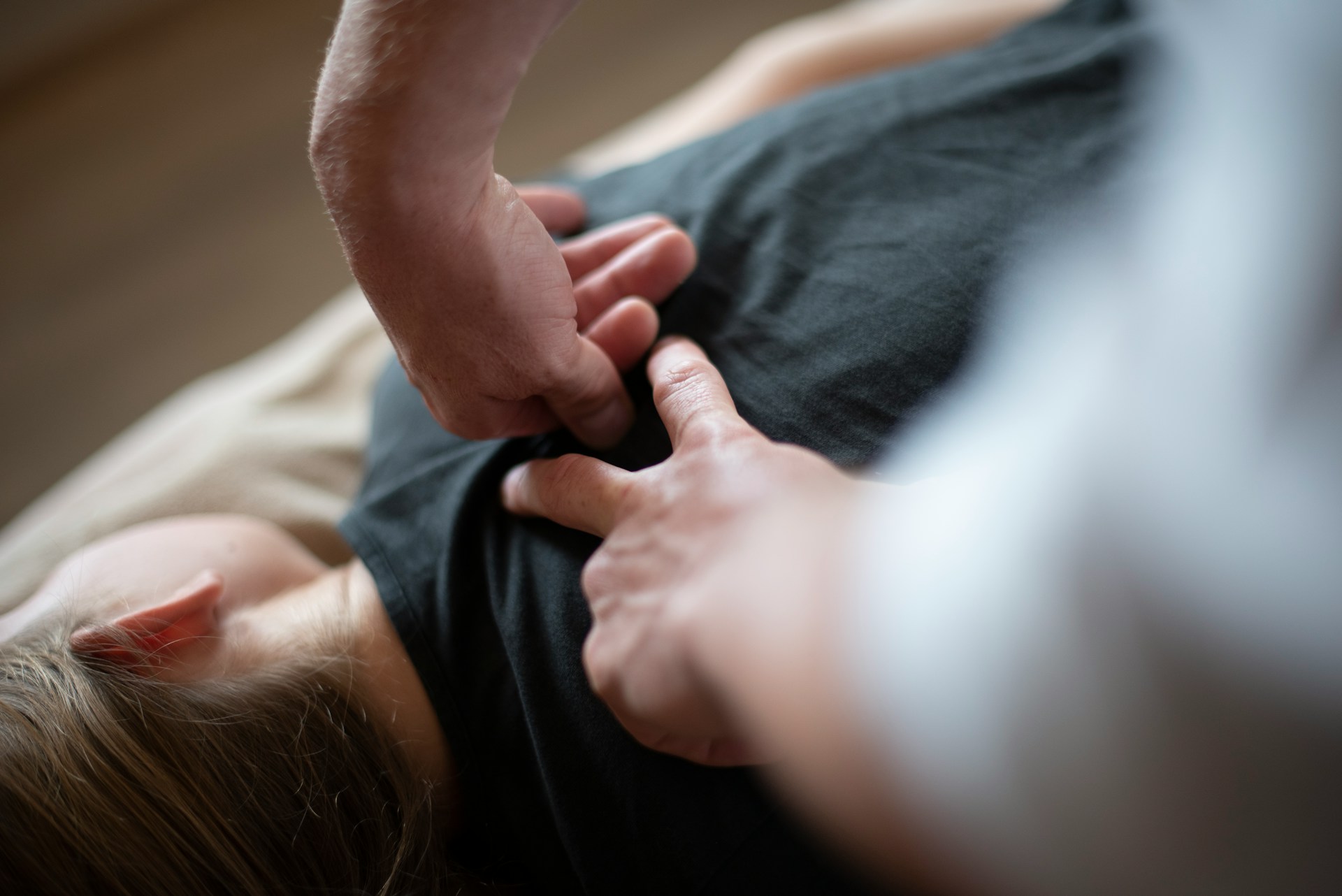Dealing with a bulging disc can be frustrating. That sharp or nagging pain in your lower back can make simple movements feel like a real challenge. While bed rest might seem like the best option, staying still for too long can slow down your recovery or make things worse. With the right approach, including gentle movement, many people find they can manage their symptoms and regain mobility more comfortably.
One of the easiest and most helpful ways to support your recovery is by doing simple stretches. When done correctly, stretching helps reduce built-up pressure around the spine, improves circulation, and makes regular movement feel easier again. When combined with professional support like chiropractic care, stretching can support healing in a way that feels natural and steady. Here, we’ll go through the basics of what a bulging disc is and how to stretch without setting your recovery back.
Understanding a Bulging Disc
A bulging disc happens when one of the discs in your spine shifts from its normal spot and presses outwards. These discs sit between each vertebra and work like cushions. They help absorb shock while keeping your spine moving smoothly. But when a disc starts to push out or change shape, often due to age or injury, it can press on nearby nerves and cause pain.
The discomfort can show up in different ways, like:
– Dull or sharp pain in the lower back, often worse with long sitting or standing
– Tightness or weakness in the legs
– A pins-and-needles feeling that spreads down one side of the body
People who sit a lot, lift heavy objects often, or move with bad posture day-to-day are more likely to notice these symptoms. For many, it builds up slowly. You might ignore the first few twinges until movements like bending or twisting suddenly trigger a bigger pain.
Understanding what causes a bulging disc can help you avoid repeated injury. Some of the most common factors include:
– Poor posture and spine alignment
– Repetitive lifting or twisting
– Lack of core support from weak abdominal muscles
– Natural wear and tear over time
Since the disc isn’t completely out of place, gentle correction and care can usually help shift it back to a more comfortable position. That’s where proper stretching and chiropractic care for bulging disc can support healing. Stretching loosens muscles that may be tugging on the spine, reducing pressure. Meanwhile, a chiropractor can help with alignment so your body can recover in a more balanced way.
Stretching Safely: Tips and Precautions
Before jumping into any stretches, it’s worth keeping a few things in mind. You don’t want to push through pain or force uncomfortable positions. A good stretch should bring relief, not strain. The idea is to ease into movement slowly and focus on areas that need attention.
Here are some tips to help you stretch safely with a bulging disc:
1. Warm up first
Take a short walk or do gentle movement to get blood flowing and loosen tight spots before stretching.
2. Listen to your body
It’s fine to feel mild tension during a stretch, but if you notice sharp, burning, or stabbing pain, stop right away.
3. Hold, don’t bounce
Slow and steady is best. Hold each stretch for 15 to 30 seconds. Bouncing can pull at the spine and make things worse.
4. Breathe through the movement
Take deep and even breaths. This helps your muscles relax and encourages blood flow during the stretch.
5. Stay balanced
Stretch both sides of your body, even if the pain is only on one side, to avoid new muscle imbalances forming.
Stretching becomes most helpful when done with guidance. A chiropractor can assess which muscles are tight, weak, or overused, and recommend the right moves to support recovery. They can also guide your progress as your body heals.
Simple Stretches for Bulging Disc Recovery
Once you’ve warmed up and are ready to move, here are a few gentle stretches you can try at home. They can help reduce spinal pressure, improve flexibility, and ease discomfort, all without special equipment. Move slowly and stop any stretch that causes pain.
1. Hamstring Stretch
Tight hamstrings can tug on your lower back and add unnecessary strain.
– Sit on the floor with one leg extended straight and the other bent with your foot against your opposite inner thigh
– Lean forward, reaching for the toes on your straight leg while keeping your back as straight as possible
– Hold for 20 to 30 seconds, then switch legs
2. Piriformis Stretch
This targets the muscles deep in your hips and buttocks, particularly useful when you’re dealing with sciatica-type symptoms.
– Lie on your back with both knees bent
– Cross one leg over so your ankle rests on the opposite knee
– Grab the thigh of your bottom leg and pull it gently towards your chest
– Hold for about 30 seconds, then repeat on the other side
3. Cat-Cow Stretch
This gentle movement helps improve spinal motion and reduce stiffness.
– Get on your hands and knees with your wrists under your shoulders and knees under your hips
– Arch your back upward slowly as you pull your stomach in (like a stretching cat), then lower it and lift your head and tailbone (like a cow)
– Move between these two positions slowly for 30 to 60 seconds while breathing deeply
4. Child’s Pose
This calming stretch helps release tension through the lower back and hips.
– From your hands and knees, gently lower your hips back towards your heels
– Reach your arms forward or rest them by your sides
– Drop your head toward the floor, relax, and stay as long as it feels comfortable
You don’t need to do all four right away. Begin with one or two and build from there. Set aside five to ten minutes once or twice daily and stick with it, a little consistency goes a long way.
Integrating Chiropractic Care for Better Results
While stretching helps with flexibility and relief, chiropractic care offers another layer of support that encourages long-term healing. With a bulging disc, your spine may not be aligning or moving well on its own. A chiropractor can guide those joints into better positions using gentle techniques.
Here’s why working with both stretches and chiropractic care for bulging disc recovery can be more effective:
– Stretches loosen the muscles, which helps your spine become easier to adjust
– Adjustments improve joint movement and ease nerve pressure so you feel less pain
– Chiropractic care reduces inflammation and improves how your nervous system communicates
– Seeing someone regularly means your progress gets tracked and adjusted as needed
For example, if stretches seem to be helping but you can’t shake stiffness in one area, a chiropractor might find that a nearby joint is locked up. A simple adjustment may release it, letting your body move more freely again. Everyone’s body responds a little differently, so having tailored care can be a smart way to move forward.
Taking Charge of Your Recovery
Living with a bulging disc doesn’t mean putting life on hold. With the right balance of stretching and support, it’s possible to feel more comfortable in your body again. Recovery can take time, but each small step counts and adds up.
Stretching encourages better habits for your spine and helps you listen to what your body needs. When matched with support from qualified chiropractic professionals, that recovery process becomes clearer and more manageable.
If you’re dealing with back pain or stiffness in Melbourne and looking to improve how you feel on a day-to-day basis, now’s a good time to learn what personalised care can do for you. With consistent effort and the right strategy, you can make meaningful progress.
If you’re ready to improve your comfort and mobility, explore how chiropractic care for bulging disc can support your recovery. Let Capel Sound Chiropractic help you move more freely and get back to enjoying the everyday activities you love.




